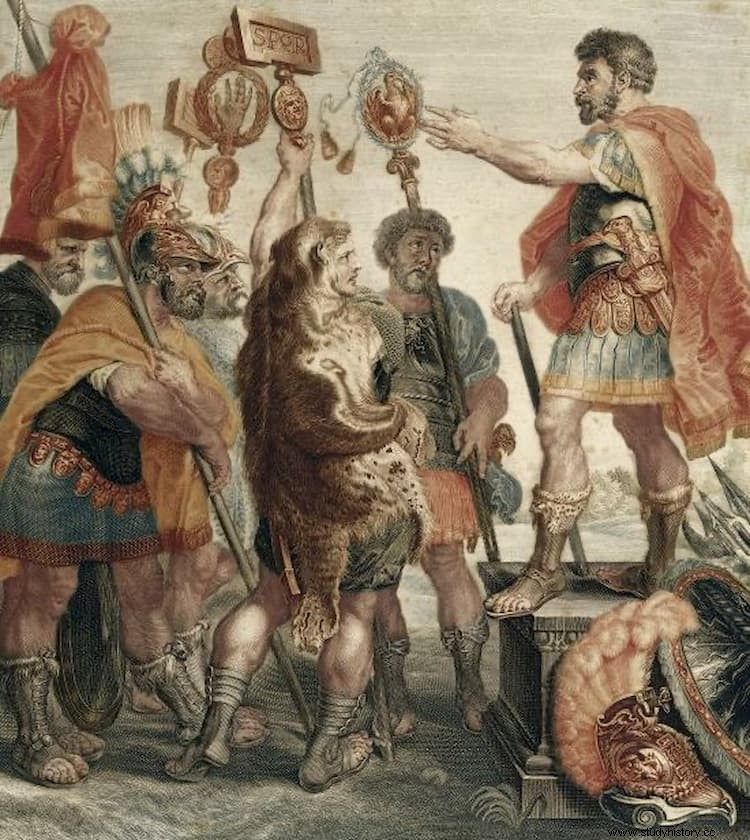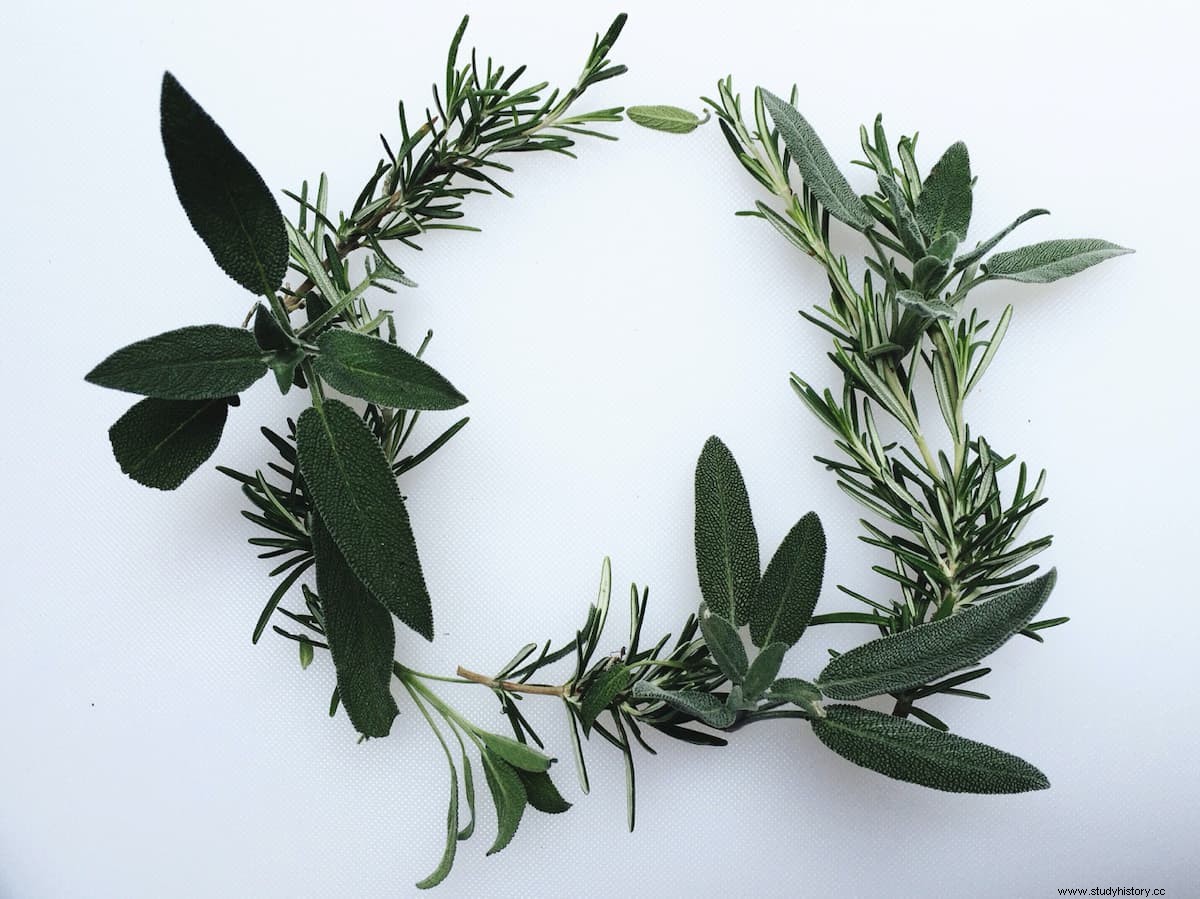Military decorations are not something relatively recent, since the Egyptians from the Old Kingdom (between 2686 and 2181 BC) knew them and awarded them to their most outstanding soldiers. Greeks, Celts and Romans also had different decorations, whose names have come down to us although their meaning or purpose is not always clear.
This is what happens, for example, with the Hasta pure (or even donatica ) Roman. It was a type of spear made only of wood, without a metal tip, which was perhaps awarded as a prize for bravery, although sources mention that it was also awarded to civil officials.
Polybius says that it was granted to the legionnaire when he wounded his first enemy. It usually appears mentioned in funerary stelae, in inscriptions that recall the merits of the deceased.

The Romans had an extensive list of decorations and also, of course, imaginative and cruel punishments, such as the fustuarium or beating, which Julius Caesar considered a form of discipline, since courage alone was not enough to ensure the firmness of the average soldier .
The highest of all Roman decorations, and at the same time also the oldest and rarest, as it was awarded on a few occasions, was the so-called Gramineous Crown (literally grass crown , also known as Corona obsidionalis ).
Perhaps because, unlike the rest of decorations and awards, it was not awarded by the Senate or the officers to the troops, but the other way around, by the soldiers to their superiors when they deserved it.

It was only awarded to those whose actions resulted in the saving of an entire army or legion, such as breaking an encirclement or a siege. Pliny the Elder said about her:
The crown itself, because it was literally a grass crown, was made from vegetables collected on the battlefield in question by the legionnaires themselves.

At least until the time Pliny writes (68-77 AD) we know that it was only granted 8 times (some say 9, we'll see why). The first to Lucio Sicio Dentato, whose history we have already told in another article, tribune in 454 BC, who participated in one hundred and twenty battles, received forty-five wounds and won an unparalleled number of decorations.
Publius Decius Mus (consul in 340 BC) is the only one to receive two grass crowns . In the year 343 B.C. during the war against the Samnites he managed to break through the encirclement by keeping his position high above a valley. One of his crowns was awarded to him by his own troops, and the other by those he managed to rescue from the siege.

Quinto Fabio Máximo received it for having prevented the capture of Rome by Hannibal, around 209 BC. It would be the only time the crown was awarded jointly by the people and the Senate:
According to Pliny, the gramineous crown it was also granted to Marco Calpurnio Flama, who was a military tribune in Sicily during the First Punic War. His feat, leading 300 volunteers on a desperate mission to free a consular army trapped in a gorge by the Carthaginians. 
The only centurion to obtain it, and at the same time the lowest-ranking soldier, was Gnaeus Petreius Atinas, during the Cimbrian War (113-101 BC) against the proto-Germanic Cimbri and Teuton tribes, for saving an entire legion whose retreat cut the enemy.
The dictator Sila recounted in his memoirs that he too had been awarded the gramineous crown by his troops during the Social War, specifically in the city of Nola, near Naples. Pliny questions this statement, although he does not completely deny it.

According to Varro, Publius Cornelius Scipio Emilianus received the gramineous crown in Africa, for rescuing three cohorts. A statue of him erected by Augustus in the forum bore an inscription commemorating this fact. Pliny ends his list with Augustus, who was granted by the Senate and not by the troops, which must have been more of a political symbol than anything else.
So far there are 8. Some include among those decorated with the grass crown Quinto Sertorio, the soldier who resisted Sulla in Hispania for years, for having defeated some rebels in Cástulo in the year 93 BC However, when Pliny speaks of Sulla's decoration, he says nothing more than

Which does not mean that Sertorius was granted it too, but rather that in Pliny's opinion they should have been granted the one obtained by Sulla . Also, let's remember that the crown was awarded for saving one's troops, and not for defeating enemies , as those who include Sertorius on the list say.
This is the opinion, for example, of Valerie A. Maxfield, for whom the evidence of other authors is consistent with Pliny, since although some duplicate the names given by him, none add new ones .
Unfortunately no representation of the grass crown has survived, neither in coins nor in sculptures, at least none that have been identified with certainty.
